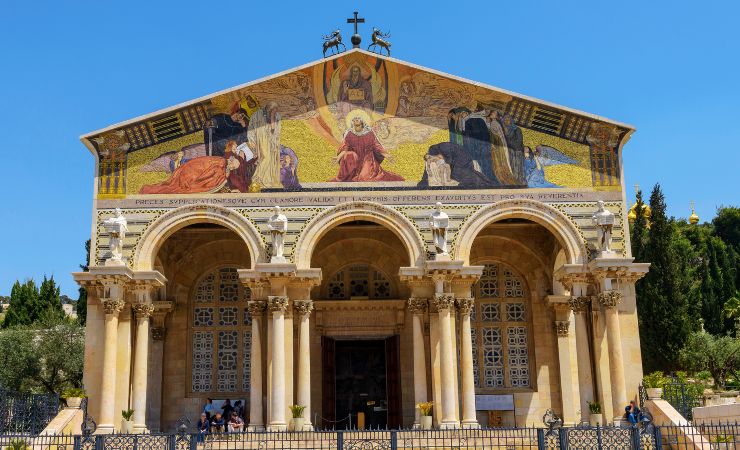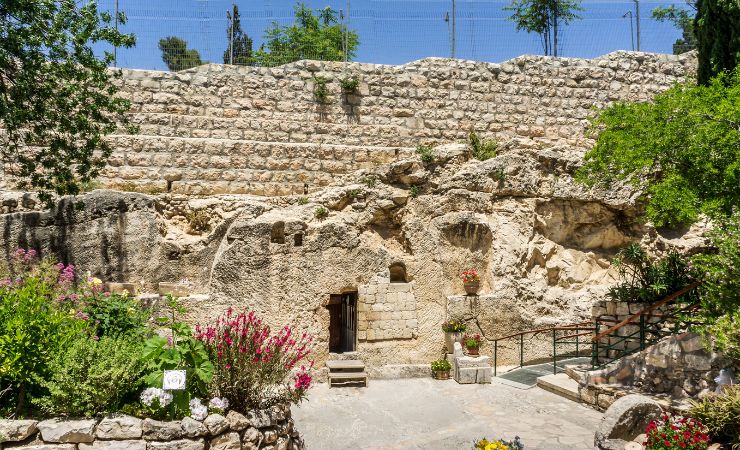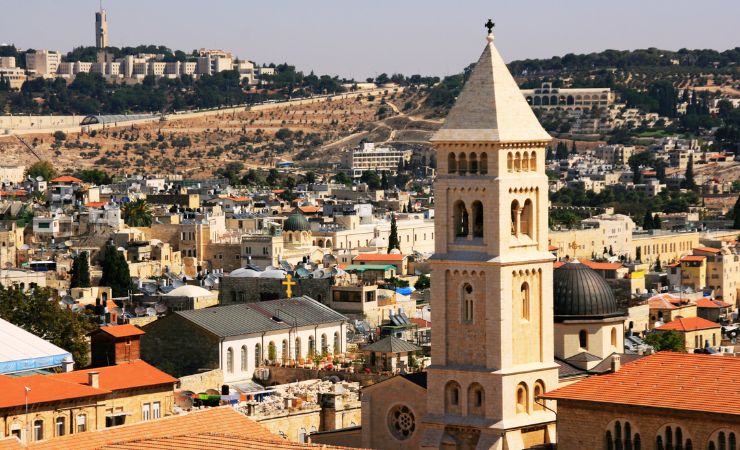Dominus Flevit Church Jerusalem: Where Tears of the Lord Speak
Originally published: June 2023 | Last updated: May 2025
The Dominus Flevit (The Lord Wept) Church was built in the 20th century. It was constructed between 1953 and 1955, under the supervision of the renowned Italian architect Antonio Barluzzi. The project was financed by the Franciscan Custody of the Holy Land, the religious order responsible for safeguarding and maintaining Catholic sites in the region. The Church offers panoramic views of the ancient city, captivating visitors with its significance and allure.
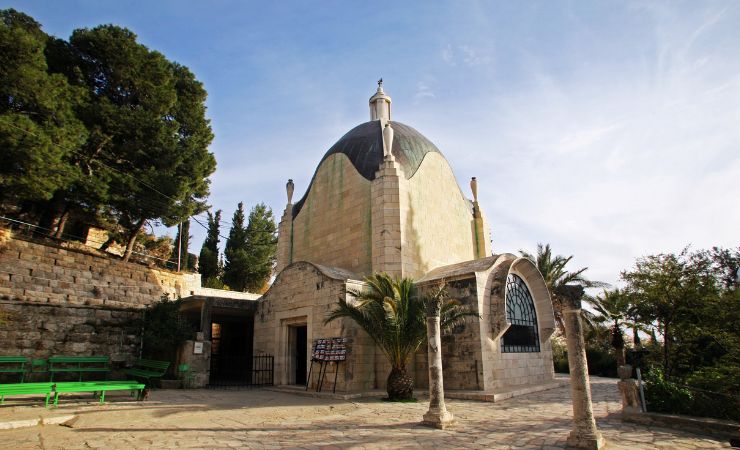
Where is Dominus Flevit Located?
The Dominus Flevit Church is situated on the Mount of Olives, east of Jerusalem’s Old City, not far away from the Chapel of the Ascension and Pater Noster. It provides stunning vistas of the city’s iconic landmarks.
Biblical Context
The name “The Lord Wept” the teardrop-shaped church commemorates the event when Jesus, foreseeing the future destruction of Jerusalem, expressed deep sorrow and wept.
According to the Gospel of Luke, as Jesus approached Jerusalem on Palm Sunday, he was moved to tears.
“And when he drew near and saw the city, he wept over it, saying, ‘Would that you, even you, had known on this day the things that make for peace! But now they are hidden from your eyes. For the days will come upon you, when your enemies will set up a barricade around you and surround you and hem you in on every side and tear you down to the ground, you and your children within you. And they will not leave one stone upon another in you because you did not know the time of your visitation.'”
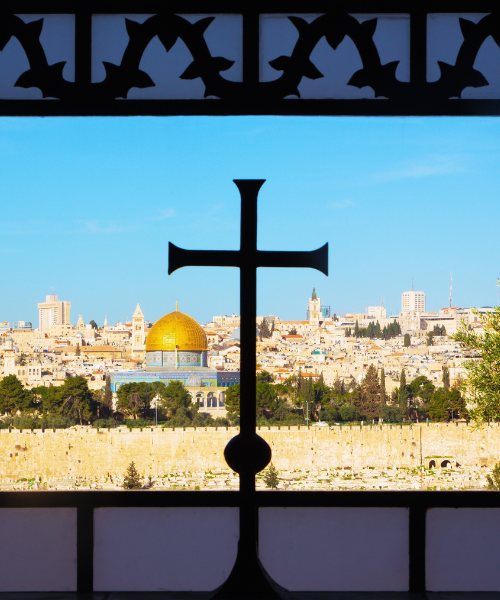
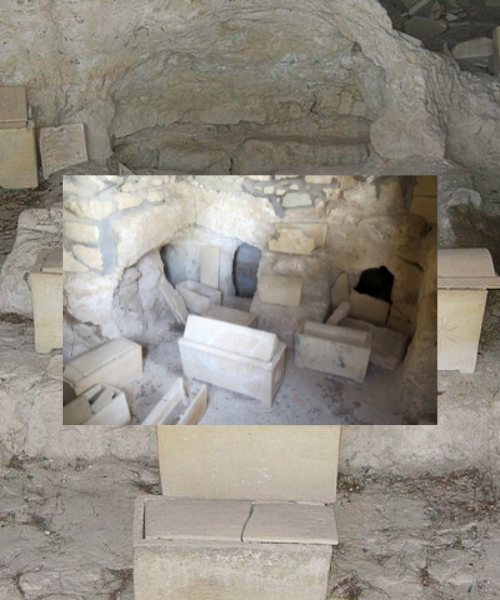
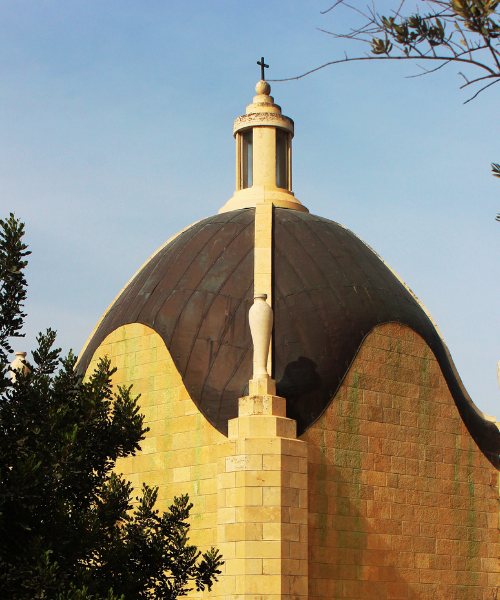
Architectural Masterpiece
Designed by the renowned architect Antonio Barluzzi, the Dominus Flevit Church is a testament to his visionary craftsmanship.
Its teardrop shape, symbolizing the tears shed by Jesus, invokes a profound sense of emotion and contemplation. The church’s Jerusalem stone construction integrates it into the ancient landscape, exuding a timeless authenticity.
Approaching the church, you’ll be captivated by its striking façade adorned with intricate stone carvings and reliefs depicting biblical scenes. These artistic elements enrich the spiritual ambiance and evoke a sense of reverence.
Stepping inside, you’ll be embraced by an atmosphere of inspiring beauty. Magnificent stained glass windows, with vibrant hues of blues, greens, and reds, illuminate the space, casting a kaleidoscope of colors and depicting biblical narratives. The high arched ceiling, adorned with delicate frescoes, elevate the sense of grandeur, while the soft lighting and carefully designed acoustics create a serene ambiance for reflection and prayer.
Archeological findings at Dominus Flevit
The Dominus Flevit Church is intertwined with fascinating archaeological discoveries. Some of the notable findings at the church include:
Ancient Tombs from the Canaanite Period: Beneath the site, archaeologists found burial caves from the Jebusite era, complete with rich funeral offerings that hint at ancient Jerusalem’s trade ties across the region.
Jewish Burial Sites from the Second Temple Period (1st century BC–1st century AD): Numerous Jewish tombs were uncovered from the time of Christ, featuring:
- Ossuaries (bone boxes) with names like Jesus, Mary, Martha, Shimon, John, and others scratched or traced in charcoal.
- Sarcophagi, some bearing Judeo-Christian symbols, suggesting the blending of early Christian and Jewish communities.
Artifacts from the Roman and Byzantine Eras:
- Golden jewelry, delicate glass vessels, and pottery pieces from a necropolis nearby.
- Silver shekels minted during the Jewish First Revolt.
- A magnificent Herodian-period sarcophagus.
Ruins of a 5th-Century Byzantine Church:
- A beautifully preserved mosaic floor with colorful fruits, flowers, and intricate patterns.
- A Greek inscription mentioning Simon, a “friend of Christ,” who helped decorate the place of worship.
Remains of a Byzanto-Arabic Monastery: Traces of an ancient monastery church from the early Islamic period.
First Temple Period Pottery Shards:
Small, worn pottery pieces provide glimpses into daily life during Jerusalem’s earliest biblical era.
Additional Information
Biblical Era (Pre-70 AD):
- c. 16th-14th Century BC: Canaanite tombs exist in the area where the Dominus Flevit Church is now located. Archaeological findings from this period have been unearthed.
- Time of the Second Temple (Early 1st Century BC – Early 1st Century AD): Jewish tombs, including those with ossuaries, are present in the area.
- Palm Sunday (Early 1st Century AD, likely around 30-33 AD): Jesus makes his triumphal entry into Jerusalem, descending the Mount of Olives. As he approaches and sees the city, he weeps over its future destruction, prophesying the events to come. This event is the central commemoration of the Dominus Flevit (“The Lord Wept”).
- Jesus’ Ministry in Jerusalem (Early 1st Century AD): The tradition associated with the Mount of Olives includes Jesus instructing his disciples, possibly in a grotto near the summit.
- 70 AD: The Roman legions besiege Jerusalem, culminating in the destruction of the Temple and the leveling of the city, fulfilling Jesus’ prophecy.
Post-Biblical Era:
- 5th Century AD: A Byzantine church dedicated to the prophetess St. Anna is built on the site where the Dominus Flevit Church now stands. An elaborate mosaic floor from this church has been preserved.
- 634-638 AD: Sophron, the Patriarch of Jerusalem, writes about the beauty of the Mount of Olives.
- 7th-8th Century AD: A Byzanto-Arabic monastery is established in the area. Ruins of its church were later found beneath the Dominus Flevit Church.
- 16th Century: The reference point for Jesus’ weeping becomes a mosque known as el-Mansuriyyeh, located on the northern side of the Franciscan property.
- 1891: The Franciscan Custody of the Holy Land purchases a plot of land close to the ruins of the el-Mansuriyyeh mosque.
- 1953-1955: Archaeological excavations are conducted on the Franciscan property by Father Bellarmino Bagatti and J.T. Milik. These excavations uncover tombs from Canaanite Jerusalem, Jewish tombs from the time of Christ and later periods, and the remains of the Byzantine monastery.
- 1953-1955: The current Dominus Flevit Church is constructed under the supervision of Italian architect Antonio Barluzzi. The project is financed by the Franciscan Custody of the Holy Land.
- 1956: The Dominus Flevit Church is inaugurated.
Nearby sites
-
The Garden of Gethsemane: Reflect in the footsteps of Jesus as you visit the Garden of Gethsemane, where he prayed before his arrest. Ancient olive trees and a serene atmosphere create a sacred ambiance.
-
Mary’s Tomb: Mary’s Tomb is believed to be the burial place of the Virgin Mary. Located in the Kidron Valley and footsteps away from Absalom’s Tomb, this sacred site holds significant religious importance for Christians.
-
Pater Noster (The Eleona) Church: The Eleona Church, situated on the Mount of Olives is where Jesus taught his diciples how to prey.
-
The Church of All Nations: The Basilica of the Agony is adjacent to the Garden of Gethsemane. Built by Antonio Berluzzi, this is the perfect place to contemplate Jesus’ agony and arrest.
-
Mount Zion: Mount Zion includes a few important sites such as the Last Supper Room, the traditional burial place of King David, the Dormition Abbey, and the Zion Gate.

